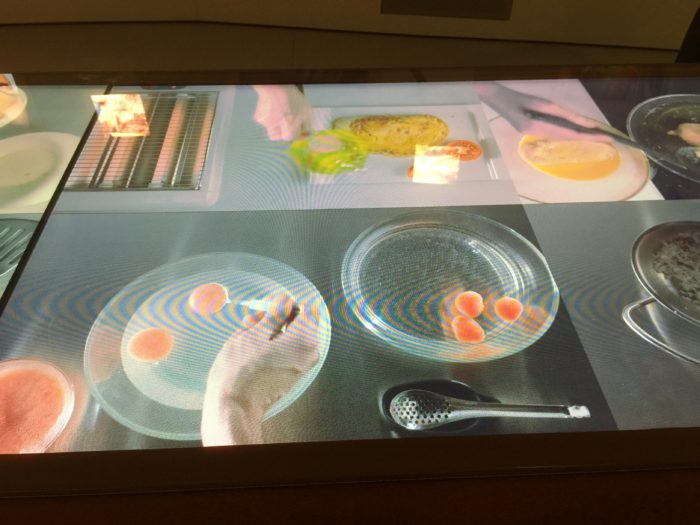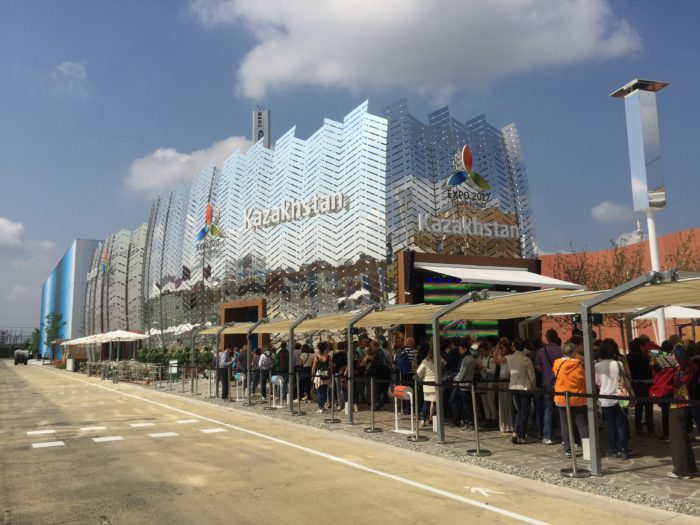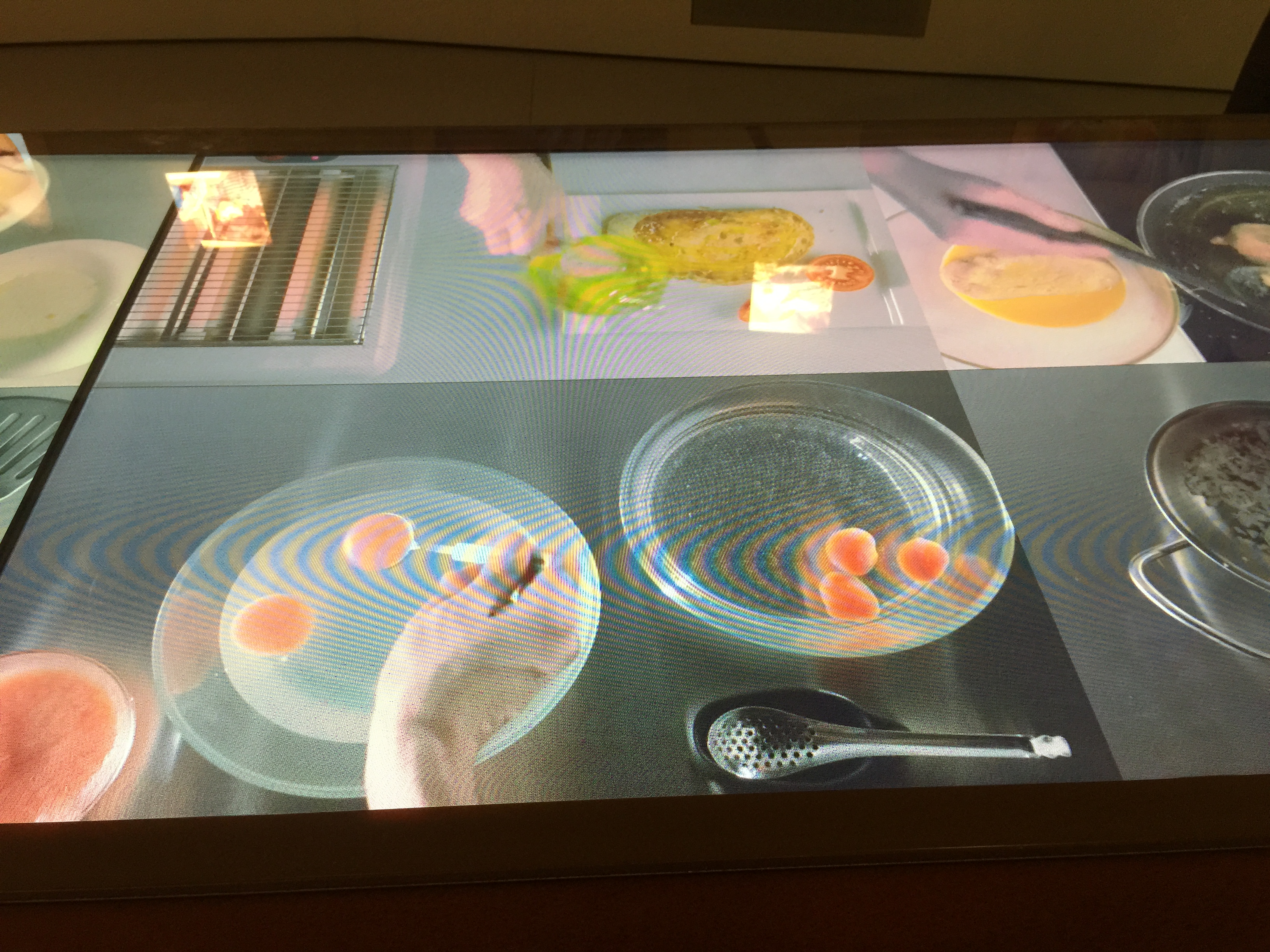While “thought leaders” gather around the world to predict the future of food, Italians are hosting this year’s world’s fair, the Milan Expo 2015. The Italians are using the Expo to burnish its brand as the preeminent leader of food innovation. The Italians came up with the Maserati and the Moka pot, so why not edible packaging and digital delivery of food?

But wait, what happened to French leadership in all things food-related? If you attend the Milan Expo, you’ll be hard pressed to see where France fits in. Of course, since Italy is the host of the fair, the affair has an effusive Italian feel. Eataly has a large footprint, as does espresso, gelato, and pasta. And in almost every detail, from the kiosks to the drinking fountains, you can see the fingerprints of Italian designers.
Nations have used these fairs as a platform for nation-branding, so it’s no surprise that Italy emerges as the new leader of food design, taste, and innovation. No telling what the French will need to do to regain their preeminent position as the arbiter of food. Although a group of young chefs in Paris is rallying the new generation of French chefs, they will have to imagine how to regain the crown for leadership of all things food-related now that chefs in other countries have moved ahead without being tied to a stubborn French narcissism. And, in addition to the new generation of French chefs, French entrepreneurs are finding opportunities to regain their high regard for a blend of art and science in food. This summer, 33entrepreneurs, a French startup accelerator in Bordeaux, France, will be traveling throughout the US with its tour of food startup contests in the areas of food, beverages, wine, and travel. (The organization’s use of “33” comes from its goal of “disrupting the way 33% of the world’s GDP.”) Perhaps these young startups will put France back in the game.
After all, the French launched the world’s first industrial exposition in 1798, in Paris, and established France, in particular Paris, as the leader in food and fashion. Everyone, including the English, attended these events, enjoying food created by French chefs and delighting the French flair for fashion. The French expositions were really a display of how technology and art merged to make useful innovations. In 1885, Jules Burlat described the 1844 fair, noting how industrial art and fine art shared the stage. Almost 4,000 exhibitors crowded the pavilions during the 1844 world’s fair in Paris, displaying the latest inventions in industry and agriculture. Steam was the biggest game changer, giving inventors a new source of power. One exhibitor showed how he used steam to power a seawater-to-freshwater conversion system.
These French fairs launched a succession of world’s fairs, including the famous London Great Exhibition of the Works of Industry of All Nations London Great Exhibition in 1851. The famous French chef Alexis Soyer set up a restaurant in the midst of the British fair, parading preeminent French gastronomy to the six million attendees.
But the Italians have the stage now and the Milan Expo is well worth attending.
Most of the exhibits are breathtaking. In Europe, where the distances are shorter and the challenges are bite-sized, food innovations are stunning and at the Expo you can see what our food world might look like in 2050. For example, the Coop Market of Italy built a digital supermarket on the fairgrounds. If you want some apples for a snack, you can go to the market, and while you put them into your basket, you can read all about your apples and see who grew them, how they grew them, how the apples traveled to the market, the size of their carbon footprint, their full nutritional analysis, and suggested uses. All this data is stunningly displayed in real-time overhead as you move through the wide aisles. If ever you could imagine how big data might be merged and displayed to create a new transparency of the food system, this moment is telling.

The implications of a convergence of Big Data and Big Food are just beginning to emerge. At the Institute for Food Technologists conference this month futurist Mike Walsh said, “The era of big data will impact not just the production, processing, and distribution of food, but the way that business leaders make decisions.” Seems that your Instagram photos, tweets, healthy metrics, and POS data will shape the our future food system. The data/food mashup will give a digital expression to Anthelme Brillat-Savarin’s infamous statement in 1826, “Tell me what you eat, and I will tell you what you are.”
Other examples of how Big Data will shape an emerging personalized food system is at the McDonald’s exhibit. The new order entry kiosks make the fast food industry minimum wage debate somehow irrelevant. You can watch families crowd around the kiosks while they personalize their hamburgers, adding lettuce and gluten free options as they enter their own orders. A lone McDonald’s staff member stood by a checkout register, the last man standing in the world of mobile payment systems.

A mobile warehouse will deliver your bottle of water that you can sip while watching a mockup of a smart kitchen. The multiple displays and kitchen robots show how your future kitchen may integrate data gathered from your biometric tracking device to design personal food. Your smart kitchen will enable you a comfortable amount of work for you to do with your owns hands with ingredients taken from your pantry inventory that is connected to an online ordering system, connected to the local grocery delivery warehouse. Lots of imagination went into this display. The Expo has a number of displays that take the discussions at the growing number of food-related conferences into the prototyping stage.
The Milan Expo 2015, the international worlds fair with a food theme, brings home the importance of seeing our work in a global context. Innovation outside of the US is alive, fast-moving, and in some ways, ahead of our food innovators. Since countries outside the US, particularly those in Africa and Europe, operate within smaller jurisdictions, they are able to operate without the complexities of multi-state landscapes. That said, the exhibits in Milan are provocative and suggest an integrated, technology-based food system. The Expo was a reminded to think of our work in a global context. Startups and stories need connections to the rest of the world. The next fair, Expo 2017, will be held in Astana, Kazakhstan. Energy is the theme, food served at the fair will be all organic, they say.


Author